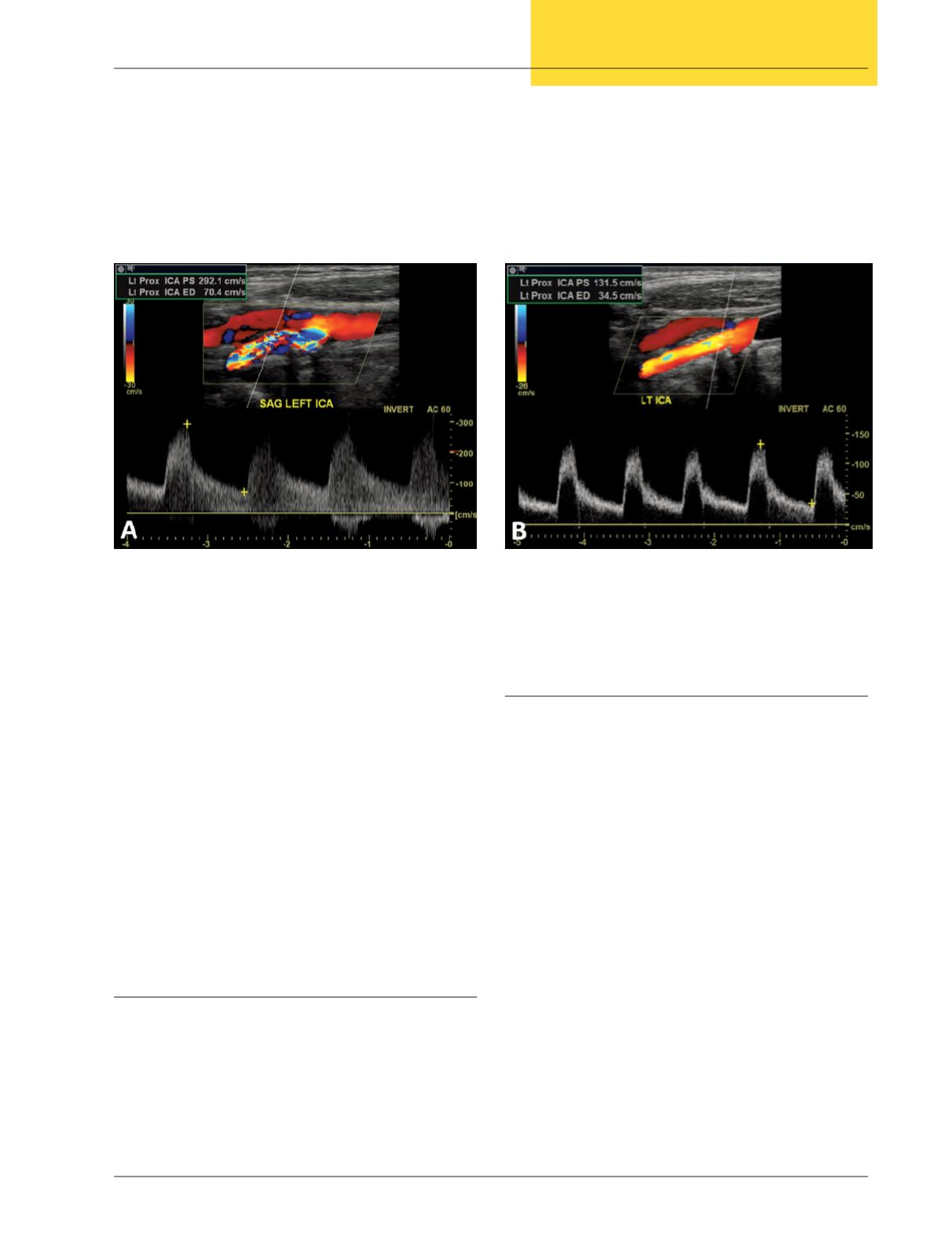
Northeast Florida Medicine
Vol. 66, No. 3 2015
37
Endovascular Neurosurgery
Initial Evaluation
Carotid stenosis, like all atherosclerotic disease, results
from a combination of genetic factors and lifestyle choices.
The initial evaluation of patients with carotid disease should
be carried out bearing in mind the underlying risk factors
for atherosclerotic disease and previous attempts at treat-
ment with medical therapy. For the most part, patients are
referred to a specialist after the diagnostic workup has been
initiated. It is common to receive a patient after the primary
care physician has identified a carotid bruit, obtained by a
carotid ultrasound or further imaging. Symptomatic patients
either present with a hemispheric/retinal transient ischemic
attack (TIA), or have developed a stroke. Carotid duplex ul-
trasonography remains the standard initial, non-invasive test
for evaluation of the extracranial carotid circulation (Figure
1). However, carotid ultrasound leaves much to be desired
regarding the exact degree of stenosis, the level/location of
the stenosis, proximal and distal anatomy, as well as the status
of collateral flow. Because of these shortcomings, patients
with an ultrasound that suggests carotid stenosis should have
additional imaging before treatment considerations can be
made. Options include computed tomography angiography
(CTA), magnetic resonance angiography (MRA), or digital
subtraction angiography (DSA).The combination of carotid
Current Endovascular Treatment of Carotid Stenosis
By Leonardo B. C. Brasiliense, MD, Ramesh Grandhi, MD,
Ricardo A. Hanel, MD, PhD, and Eric Sauvageau, MD
Address Correspondence to:
Eric Sauvageau, MD
800 Prudential Drive – Suite #1100
Jacksonville, FL 32207
Telephone: 904-388-6518
Fax: 904-384-1005
Email:
Abstract:
Stroke remains a major health care problem in the United
States and worldwide. According to the World Health Organization
and the Centers for Disease Control and Prevention, stroke was the
second leading cause of death around the globe, with an estimated
6.7 million fatalities in 2012 and the fourth leading cause of death
in the United States.
1,2
Each year, approximately 800,000 Americans
suffer a new or recurrent stroke with an estimated direct and indirect
cost of $68.9 billion dollars.
3
Development of atherosclerotic disease
of the carotid arteries is responsible for 30 percent of ischemic strokes.
4
In the past two decades, the endovascular treatment of carotid stenosis
has quickly evolved from an infant technology to a valuable tool in
the surgical management of selected patients with carotid stenosis.
Using sophisticated disease and anatomy-specific devices, minimally
invasive treatment of even the most complex carotid lesions is now a
safe alternative in the majority of cases.
Figure 1:
(A) Duplex ultrasonography demonstrates turbulent color flow and elevated peak systolic velocity indicating a
high-grade stenosis of the left internal carotid artery (ICA). (B) Duplex ultrasonography after ICA stenting showing
normalization of blood flow through the vessel and significant decrease in peak systolic velocity.


